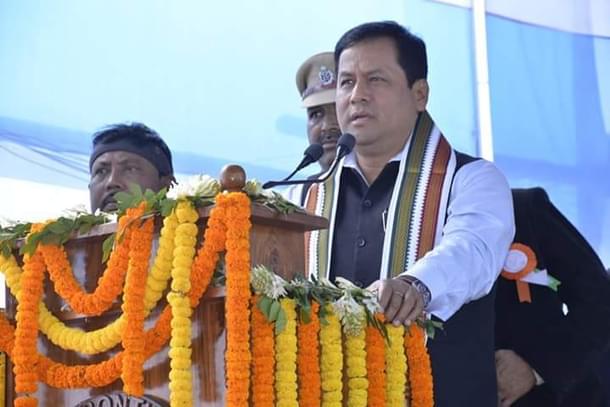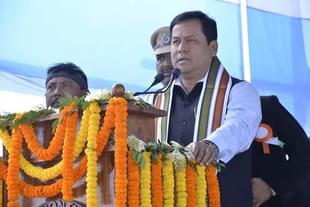Politics
From Darkness To Light: Sonowal Aiming For A Power-Surplus Assam
Jaideep Mazumdar
Aug 22, 2017, 03:16 PM | Updated 03:16 PM IST
Save & read from anywhere!
Bookmark stories for easy access on any device or the Swarajya app.


This is acruel paradox that decades of ineffective Congress rule has been bestowed upon Assam. Despite its rich reserves of coal, crude and natural gas, and hydro, solar andwind power potential, people of the state have been made to endure long hours of darkness every day. But these ‘powerless’ days and nights will soon fadeinto a bad memory.
TheBharatiya Janata Party (BJP), which promised to make Assam a power surplusstate during the poll campaign, has started moving tohonour its word soon after coming to power last month. And by doing so, it isset to usher in a new era in the state.
Assam has been reeling under excruciating power crisis with shortfallsranging from 250 MW to over 320 MW, especially in the hot and sultry summermonths. Power cuts ranging from 8 to 16 hours have been common, and the state capital Guwahati does not enjoy power supply of more thanthree hours at a stretch.
According toconsumer groups, residents of Guwahati received 11.4 hours of power supply lastyear. Power sector experts blame successive governments, mostly led by theCongress, for neglecting the power sector.
Hydel andthermal power plants have been allowed to fall into neglect. Even routinemaintenance works were ignored while funds were shamelessly siphoned off.
Nothing much has been done to harness solar and other forms of renewable energy. Noinitiative was taken, especially in the last 15 years of Congress rule under TarunGogoi, to set up new power plants.
Assam has390 million tonnes of coal reserves, 178.07 million tonnes and181.77 billion cubic meters of crude and natural gas reserves respectively. It also has a tremendous hydel power potential.
The solarand wind power potential of the state stands at at least 15,000 MW. But Assamtoday barely generates 250 MW of power, while the demand is more than 1,000 MWduring off-peak hours and 1,500 MW during peak hours.
It managesto purchase, on an average, 500 MW of power from the national grid andneighbouring states, leaving a shortfall of at least 250 MW. Thishas, apart from severely inconveniencing citizens of the state, crippledindustrial production and acted as a severe disincentive for fresh investmentsin the state.
As Sarbananda Sonowal, the new BJP Chief Minister of Assam,rightly emphasises, self-sufficiency in power is a prerequisite for developingAssam. He has made uninterrupted power supply through enhanced generation andalso cutting down on transmission and distribution losses one of the topmostpriorities of his government.
Sonowal hasmade it his mission to make his state self-sufficient in power by 2018.
Ambitiousthough this target is, his government has put in place concrete measures toachieve it. Apart from setting up new power plants, the power department headedby the young and energetic minister of state Pallab Lochan Das has started upgrading crucialdistribution network, neglected during the one-and-half decade of Congress rule.
Das has alsoput in place measures to curb rampant power theft, which the Gogoi government ignored, mainly for political reasons. Most of the power theft occurs in areas inhabited by illegal Muslim migrants fromBangladesh, which the Congress treasured as its valued vote bank.
The Gogoi government not only shelteredthe illegal Muslim migrants from Bangladesh, but also provided free power tothem at the cost of the citizens of Assam!
The Sonowalgovernment is also taking positive steps to harness solar energy. Rooftop solarpanels are being installed at all government offices which will havepower-saving LED bulbs within a couple of months. Such bulbs are also beingsold by the government at Rs 100 a piece against the average market rate of Rs250.
Specialincentives are being rolled out for households and commercial establishments for installing solar panels. Many such small, but significantsteps, are being taken. Very soon, solar generating stations will be set up allover the state and even households generating solar energy will be connected tothe state grid. Mini-hydel power plants, which are environment friendly and cangenerate 541 MW electricity, will also be setup.
About 30lakh households spread over 26,000 villages in the state will be provided power connections over the next two years byaggressively harnessing funds available under the Deen Dayal UpadhyayGram Jyoti Yojana.
By 2018,promises Das, every household in Assam will be connected and thestate will be self-sufficient in power. Within five years, Assam will be apower surplus state by adding 870 MW to its generation capacity.
Assambecoming self-sufficient in power is crucial for the fruition of Prime MinisterNarendra Modi’s Act East policy since the state is the pivotof this policy. Besides providing a much better quality of life to Assam’scitizens, powerself-sufficiency will also spur the state’s development and progress.
That power isthe pill for development of a state is a glaring fact that had been completelyoverlooked by successive Congress governments in Assam. Quite like the Left Front regime in West Bengal under Jyoti Basu who, when onceasked why his government was not investing in the power sector, infamouslyreplied: “what shall we do with more power, eat it?” This unintelligibleshort-sightedness also marked the reign of the Gogoi government inAssam.
This article is a part of a Digital Special Series on the Power Sector sponsored by Powergrid.
Jaideep Mazumdar is an associate editor at Swarajya.





